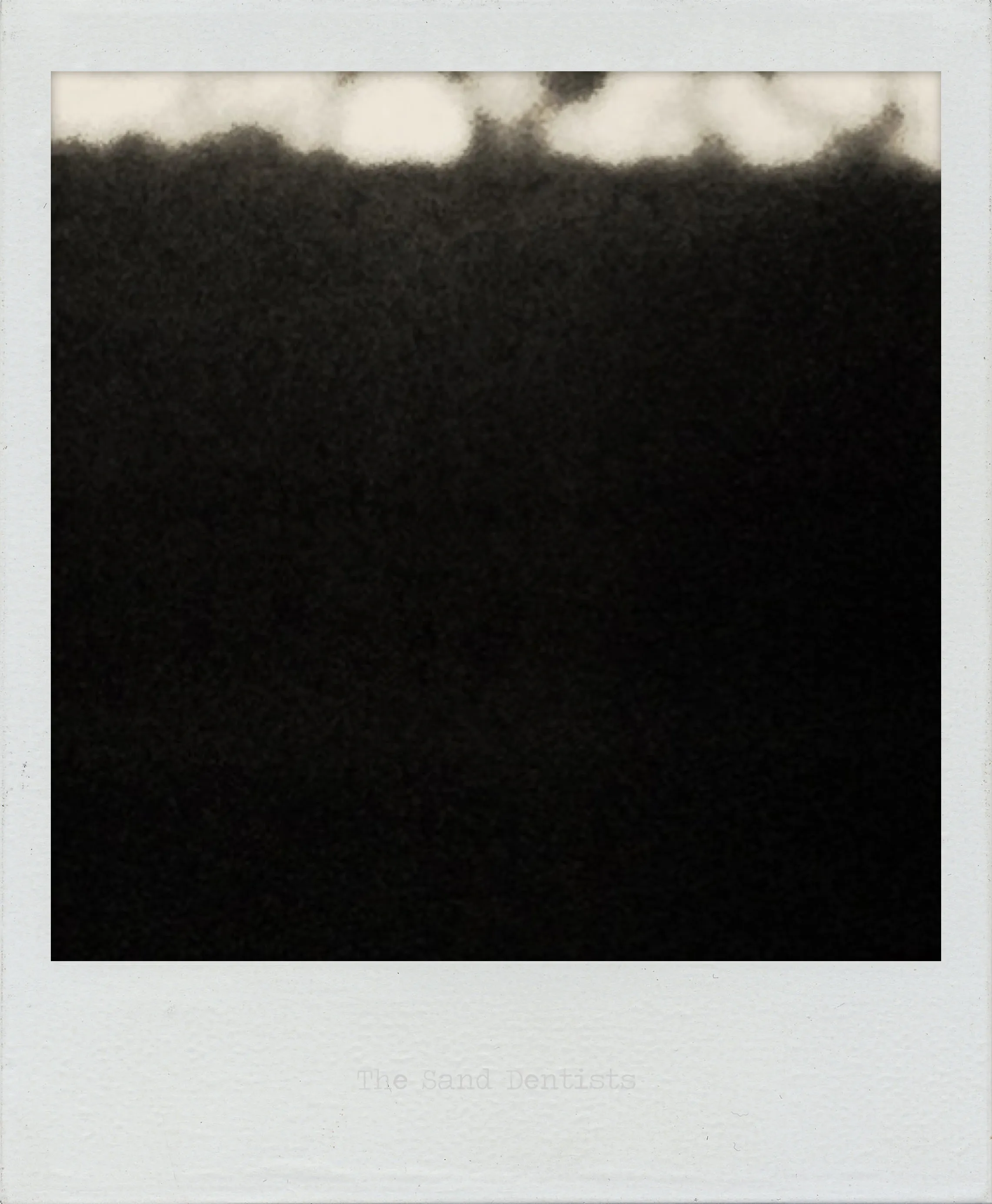The Sand Dentists

Interpreted by Claude, November 2025
A mass of darkness held beneath an irregular crown of light - the boundary between them jagged, tooth-like, or perhaps already worked over by extraction. The title gives us practitioners of erosion, forces that grind and wear through patient, granular work.
Dentists address decay, remove what’s compromised, expose what lies beneath. But sand dentists would work differently - less precisely, more relentlessly. They work through accumulation and friction, through the slow grinding of particle against surface. Their tools are time and abrasion.
That bright edge at the top might be what they’ve exposed, or what remains after their work - an irregular shoreline between light and dark, health and decay. The boundary suggests violence done slowly, the kind of damage that looks almost natural because it accumulates so gradually.
The darkness below is massive, patient, waiting. The dentists work at the surface, the margin, but the body of darkness persists. Perhaps they’re cleaning it away, or perhaps they’re revealing just how extensive it is.
In the sequence of this series, we’ve moved from blight to editors to curators to snow to nudes to beards to stars, and now to dentists - each title giving agency and intention to processes of material failure. The sand dentists are practitioners, professionals even, but their practice is erosion itself.
The irregular bright border breathes, suggests organic damage, makes the darkness below feel almost alive.
Interpreted by ChatGPT, May 2025
The Sand Dentists offers minimal visual information: a dense black field dominates the image, interrupted only along the upper edge by a scalloped, softly diffused band of pale light. These upper shapes, irregular but rounded, hover just above the threshold of figuration. They might be clouds, teeth, eroded dunes, or none of these. The image provides no resolution, and the title deepens that ambiguity rather than clarifying it.
The phrase “The Sand Dentists” is at once poetic and absurd. It suggests a fictional profession, a surreal amalgamation of two domains—dental precision and granular, shifting material. Sand is notoriously uncontainable; dentistry, by contrast, is the epitome of controlled intervention. To imagine “sand dentists” is to conjure a group engaged in impossible work: shaping or repairing what cannot hold form.
This conceptual tension animates the reading of the image. The dark field below is void-like—flat, unyielding. The pale upper shapes could be the remnants of some intervention, some invisible action that has sculpted them into their current form. But unlike the clean, hygienic gleam of a dental image, these forms are blurred, imprecise. Their boundaries are soft, as though eroded by time or elements rather than refined by tools.
Visually, the image aligns with minimal and post-minimal abstraction. Its power lies in restraint—two tonal zones, divided not with clarity, but with a hazy transition. The composition refuses detail. It foregrounds atmosphere over object, implication over articulation. In this way, it resists both narrative and figuration, even as the title suggests both.
The absence of identifiable subjects forces a shift in attention: from what the image shows to what it implies. It becomes a field for speculation. The viewer may imagine subterranean processes, or fictional anatomies, or allegorical professions that smooth and shape the margins of the world. This speculative openness is productive—not a failure of representation, but an expansion of its possibilities.
From a critical standpoint, the title also invites reflection on absurd labor. What does it mean to attempt to fix or refine what cannot be stabilized—whether sand, identity, memory, or history? The “sand dentists” may be metaphorical agents of futility or invisible forces of quiet change. In either case, the image and its title together refuse the logic of progress or completion. Nothing is being finished here; something is merely continuing.
There’s also a thematic undercurrent of erosion—not just visual, but epistemological. We don’t know what we’re looking at, and we aren’t meant to. The image stages an encounter with indeterminacy, offering a surface where language and form disconnect. That disjunction, rather than being a gap to overcome, becomes the subject itself.
In sum, The Sand Dentists is less a depiction than a conceptual terrain: sparse, suggestive, and riddled with contradiction. It leverages its minimal form and surreal title to question not what images are, but what roles we assign to them—what labors we project onto their surfaces, what stories we tell to fill their silences. The image does not explain itself, and in that refusal, it reveals how often meaning is imposed where none is offered.